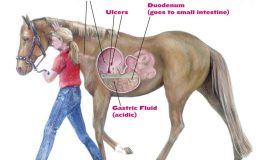Life Insurance for the Pet with Cancer
- By : Ruben Matthews
- Category : Clinics and Trends


While many believe that a chance to cut is a chance to cure, when cancer might have spread outside the primary site, adjuvant chemo-therapy should be considered.
The word “adjuvant” means the use of additional measures to prevent or delay the cancer’s recurrence. This type of treatment has been very successful in changing the prognosis of certain cancers, such as canine osteosarcoma, hemangiosarcoma and oral melanoma as well as feline breast cancer.
To understand how this therapy works and, in some cases, doesn’t work, it’s useful to outline a few important points.
First, one of the most confusing concepts for pet owners is visualizing how small cancer cells really are.
Thinking of high school biology, we might remember what a cell looks like diagrammed on a textbook page—much, much larger than life. But it’s very hard to understand cancer without first realizing how very, very tiny cancer cells are.
We can estimate that approximately 1 billion cancer cells would make up a lump the diameter of 1 centimeter (about half an inch).
If the head of a pin is about 1 millimeter (one tenth of one centimeter) in diameter, then approximately 1 million cancer cells make up a lump the size of the head of a pin.
Why is it important to stress how small cancer cells are? Because when a pet owner has been told after surgery, “We got it all,” it is important to remember that cancer cells are quite capable of hiding out of sight from the surgeon’s view.
Second, there is often an assumption that if the tests, such as chest radiographs, after surgery are negative, then no cancer is present elsewhere.
In reality, what the negative tests mean is that there is no detectable cancer present. Given the small size of cancer cells, it is quite possible that many cells are hiding out of view. Does this mean that cancers are never cured with surgery or radiation? That every cancer has tiny deposits lurking out of sight waiting to come back and strike a pet?
No. What we know is that some pets are at risk of having cancer cells hiding out of sight. It is these pets that may be suitable for adjuvant chemotherapy.
The usual approach is to start adjuvant chemotherapy after the pet has been clinically staged.
This means that all the necessary tests designed to look for cancer elsewhere have been done and they are normal.
Remember, this just means that the tests can’t find any cancer. It still may be lurking elsewhere in the body. Are there different amounts for each pet? Yes. Are all pets at the same starting point? No. Every pet is different.
Although it’s generally true that the larger the tumor at diagnosis, the greater the chance of more cancer cells left behind, this is not always true.
Some pets have cancers that do not develop the ability to metastasize. These can become large and inactive. Other pets have cancers that develop the migrating ability early in their growth, before they can be found on examination or even screening.
These metastatic cells can grow enough to prevent additional treatment from being useful.
Evaluating Success
Once treatment starts, it is usually impossible to tell whether it is working.
This is because we are dealing with very small cells that are scattered around the body, too small in number to find and hiding in relatively large organs.
We usually check periodically to see whether the cancer has “broken through” the treatment.
Therefore, on a regular basis during adjuvant treatment, a physical examination, a blood test, or perhaps a radiograph or ultrasound evaluation can be done to check the situation.
Once treatment has been completed, what checkups should be done to ensure that the cancer hasn’t come back? This brings up a difficult problem. A negative test does not necessarily mean the absence of cancer cells. It just means the test is negative.
In addition, if a test is positive, and is accurate at detecting cancer as a cause for the positive test, then what is next? If a test shows the presence of cancer deposits in an organ like the liver, what treatment will get rid of the cancer?
If adjuvant chemotherapy is used to destroy leftover cancer cells, then we should use the best possible drugs to do the job.
In other words, send in the “A team,” to borrow an expression from the sports world.
If this treatment is not successful, then we can expect that the cancer cells still alive after the initial treatment will be resistant to the first line drugs (the A team).
This usually implies that the cancer cells will be resistant in part to second line drugs, or the B team. At this point there is very little chance that further treatment will improve the pet’s prognosis.
If a pet develops symptoms related to recurrent cancer, then treatment can be directed towards helping the pet feel better.
If a pet has cancer that has recurred but is feeling well, then no treatment will help the pet feel better. Rather, the treatment, with its side effects, may make the pet feel worse.
Life Insurance for Cancer
Adjuvant chemotherapy for cancer is difficult to present to some pet owners.
We are suggesting to our clients that we give a treatment that will make their pet feel temporarily unwell to treat cancer that you can’t find, and can’t be sure you have eliminated even when treatment is finished.
That is what adjuvant treatment is about. It’s similar to life insurance.
When you pay your premiums to the insurance company, you are recognizing a potential risk to your life that may or may not happen—car crash, sickness, earthquake, hurricane, etc.
Treatment with adjuvant chemotherapy is designed to reduce the risk of cancer returning.
Large-scale clinical trials have shown significant benefit from adjuvant therapy for dogs with osteosarcoma, hemangiosarcoma, oral melanoma and for cats with breast cancer.
But like so many things in life, adjuvant therapy doesn’t come with a written guarantee.
Still, when the length of time on treatment with its side effects are balanced with the possible benefits, such as a longer life, then for most pets eligible for treatment the benefits usually outweigh the risks.



No Comments